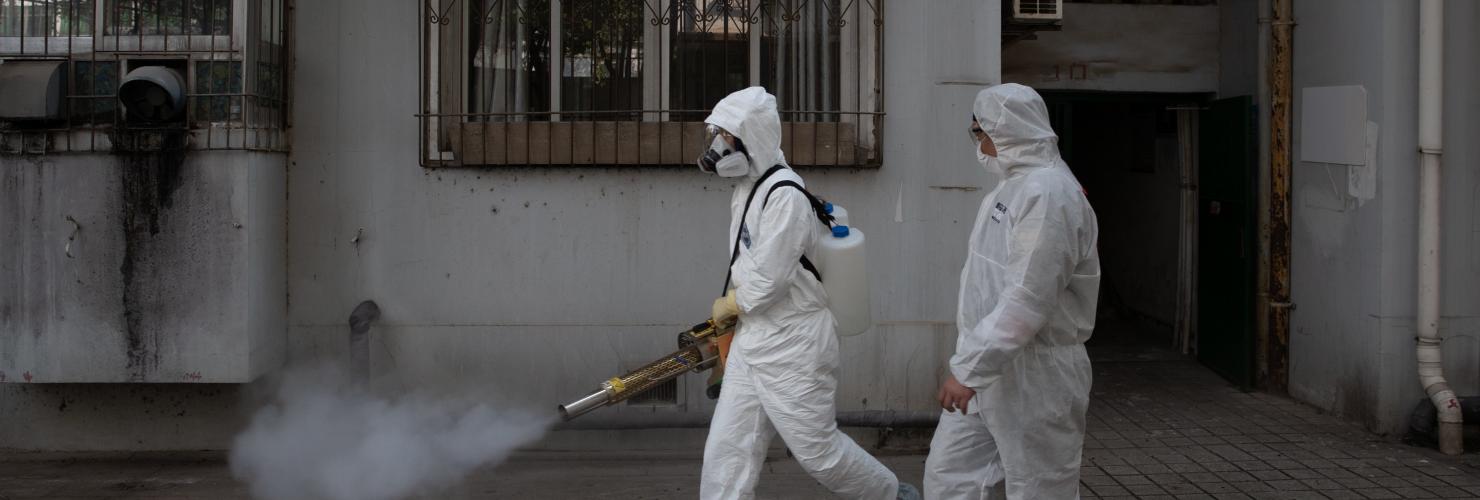

Coronavirus reveals China’s leaders’ obsession with information control
China’s leaders prize information control over information sharing, even at the risk of delaying actions to curb the spread of a disease. In that sense, the Corona epidemic has laid bare the weakness of centralized, top-down systems of authority, says Nis Grünberg.
The “hero of Wuhan” died on February 7, giving new life to accusations that the Chinese government initially tried to cover up the coronavirus outbreak. Doctor Li Wenliang had been among a group of doctors discussing the earliest cases of the virus on an online chat forum in late December, earning himself a reprimand by local police for “spreading rumors”. For Beijing’s critics, Li‘s passing made him the double victim of a censorship system that had tried to contain information about the outbreak of the virus. This was likely not a targeted cover-up, as claimed by some, but merely routine censorship.
China’s leaders are obsessed with information control, tightly managing the spread of “rumors” or information that might threaten social stability or stoke criticism of them. Information about the virus was passed on early – just not to the public. China’s Center for Disease Control and Prevention (CDC) has an online system for reporting cases like coronavirus infections, but discussing them outside the official channels is frowned upon. In a way, both disease reporting and censorship systems worked as they should, recording new diseases, and detecting and containing rumors of the new SARS-like disease before they could spread in public.
Even a Supreme Court judge criticized extreme information suppression
Which is not to say that authorities were right to act as they did. Reporting systems such as the CDC’s are important mechanisms to detect new diseases and outbreaks. But the coronavirus epidemic shows that it didn’t trigger the crisis management response it should, and that China’s leaders prize information control over information sharing, even at the risk of delaying actions to curb the spread of a disease. In fact, censorship has become so extreme, even a judge on China’s Supreme Court criticized the suppression of information shared by Doctor Li and his colleagues, and even suggested allowing “guided” criticism in the media to serve as a “pressure valve” for public anger.
The tension between information sharing and information control is one the Chinese system cannot solve. China’s Party-state loathes freely flowing information and discussion and has developed the world’s most sophisticated system of censorship and for steering public opinion in history – and it has internal channels for sharing sensitive information. But the corona crisis shows that these closed channels react slowly. Information asymmetry (local officials suppressing information) and centralized decision-making (officials waiting for commands from above about tricky issues) stand in the way of fast and efficient reactions.
Slow political action was the catalyst of the corona crisis
China learned from the SARS crisis in 2003, establishing the CDC’s reporting system in 2004. Doctors are required to use it for recording new infections and, when several cases have been recorded in one place, local authorities also have to be informed and the National Health Commission takes over public disclosure about the outbreak. In the case of COVID-2019, this means that both central authorities and local health officials were aware of the outbreak already in December. The catalyst of the corona crisis wasn’t a lack of information, it was slow political action.
Information was available to medical authorities, but this did not translate into action by political decision-makers. Xi Jinping is reported to have urged officials to act already during a Politburo meeting on January 7, 13 days before the public was alerted. While Wuhan’s medical professionals worked overtime to cope with mounting patient numbers and limited resources, and scientists raced to identify the new virus, political leaders ignored the alerts in order to finish political meetings. This inaction and underestimation of contagiousness was followed by the dramatic quarantining of entire cities – but by this point the virus had already spread widely, including to large number of medical workers. The sacking of the party leaders of both Hubei Province and Wuhan city underscores Beijing’s disappointment with their ill-fated tardiness, while also putting the blame at the local level.
The crisis lays bare the weakness of top-down authoritarian rule
The crisis lays bare the weakness of centralized, top-down systems of authority: from hospital policy to provincial lockdowns, important decisions fall to party secretaries juggling conflicting political considerations; specialized departments like the CDC only have advisory but no administrative power. Li Wenliang was a double victim of this system and so he became a symbol for two things – the risk medical professionals are taking in fighting the virus at the frontlines and the weakness of a system obsessed with information control and stability.
When news of Li’s death began to circulate, it quickly became one of the top trending topics on social media. Taken aback by the strong public reaction, the system did – again – what it does best. Censors went online to take down reports of his death – only to publicize it officially hours later. Li’s own death had been censored until someone decided the public should know.
China’s authoritarian reflexes remain quick, even or especially in the face of calls for free speech. The system for dealing with outbreaks of diseases will be reformed. Already Xi has announced tougher regulation on wild game consumption and crisis response. The narrative about fighting the virus – including Doctor Li’s heroic role – has already been taken over by the propaganda department, which has dispatched 300 media workers to Wuhan to guide public opinion down paths positive for Beijing. The center has taken back narrative control, and while important structural reforms will likely follow the outbreak, the Party-state’s obsession with stability, information control, and centralized leadership will live on.
The German version of this blogpost was first published in Der Tagesspiegel on February 23, 2020.
